- Local Time: 04:46 AM
- Weather: 16 ℃ / 61 ℉
The Wait Is Over – The GRAND EGYPTIAN MUSEUM Is Opening Its Doors! Be among the first to explore Egypt’s greatest treasure.
The article highlights the historic significance of Cairo’s medieval gates, built during the Fatimid, Ayyubid, and Mamluk eras. These gates served defensive, administrative, and ceremonial roles, showcasing the city's architectural brilliance and political legacy. Famous gates like Bab Zuweila and Bab al-Nasr reflect military strength, while others like Bab El Barkia reveal spiritual and ceremonial importance. Each gate tells a unique story from Cairo’s rich past.
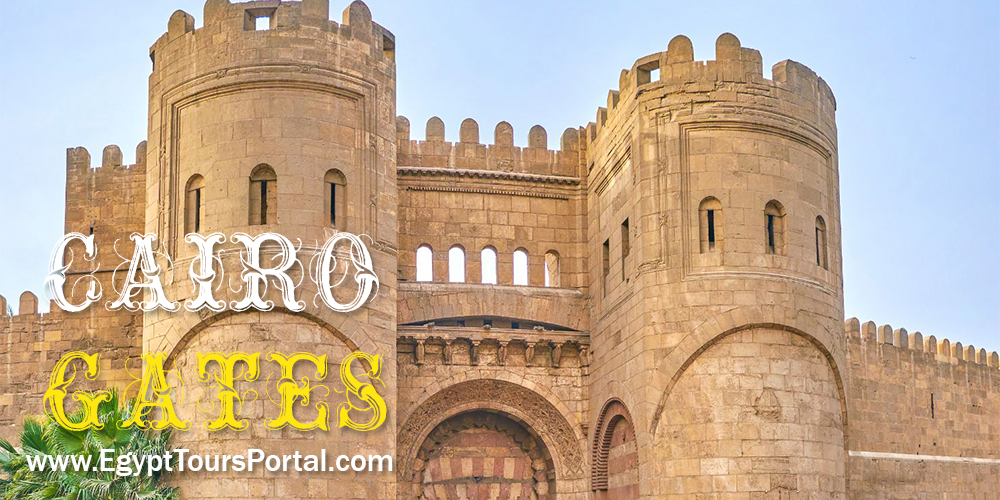
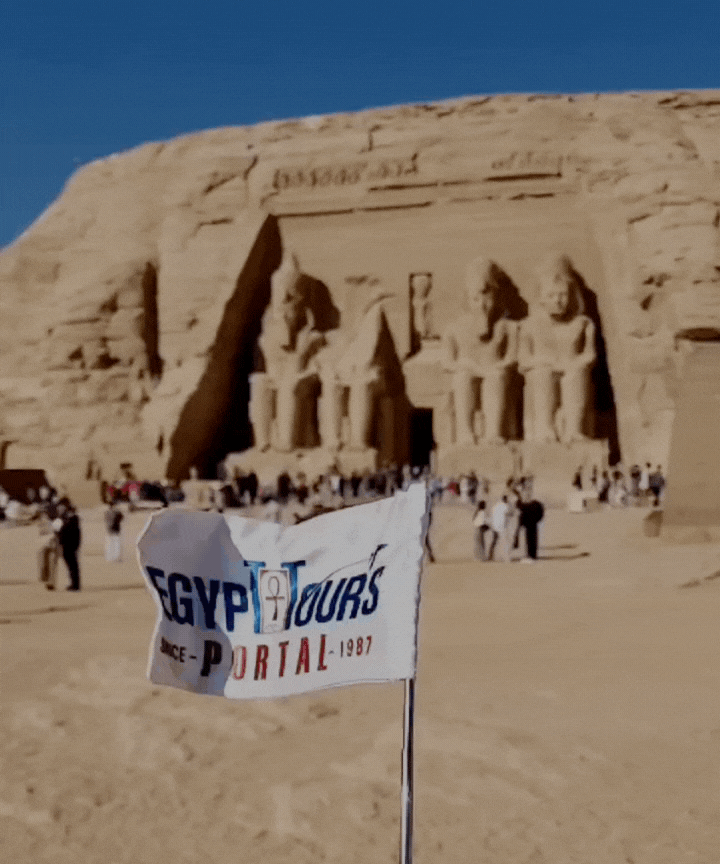
The Gates of Cairo are portals to an ancient age that spanned over a millennium and served as critical defensive, administrative, and ceremonial structures. Every detail of the gates features captivating art styles that bring to life a unique set of facts about the golden age of Cairo where this city was a beacon of power and enlightenment that needed to be protected with more than just simple barriers, but gates of divine force.
These gates were built by various rulers, primarily during the Fatimid, Ayyubid, and Mamluk eras, and they offer a glimpse into the architectural, political, and cultural heritage of Egypt's capital. Each gate tells its own story, acting as a bridge between Cairo’s glorious past and its vibrant present.
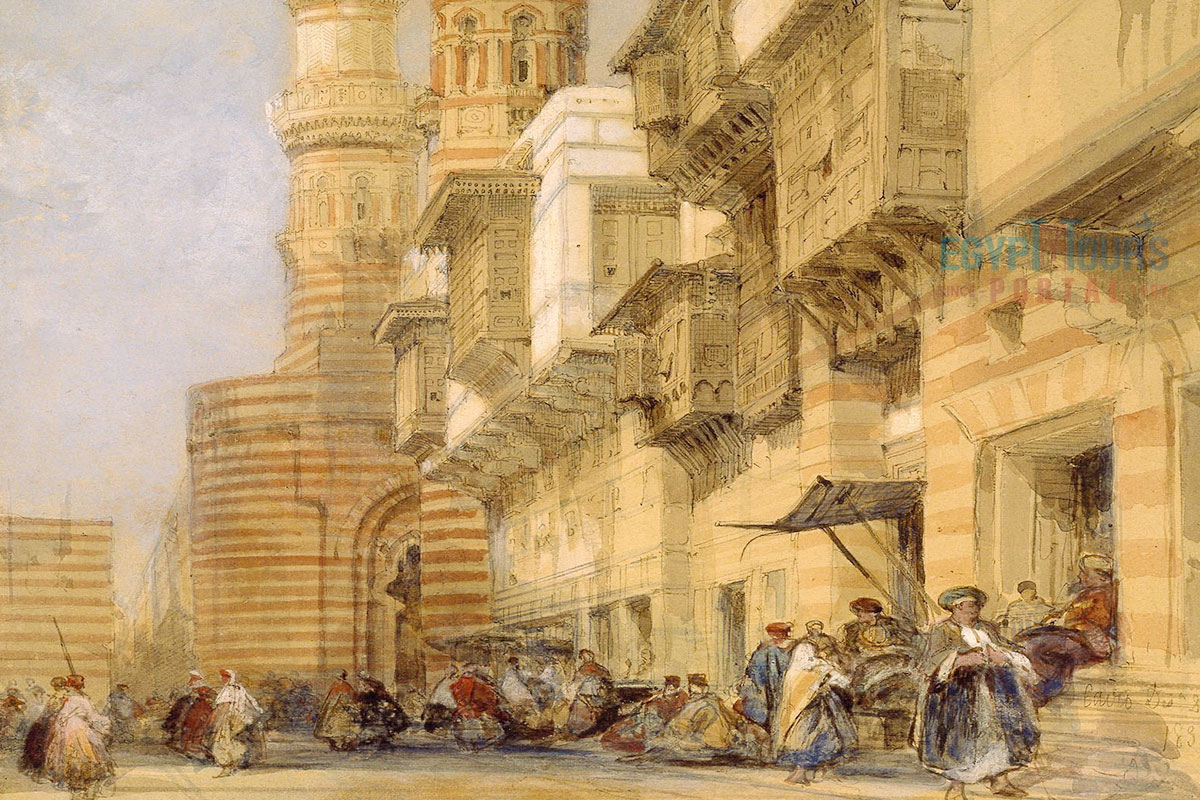
Cairo was founded in 969 AD by the Fatimid Caliphate, and its original layout was a square-shaped fortified city with walls measuring approximately 1200 meters in length and 1100 meters in width. The construction of these walls and gates began under the rule of the Fatimid dynasty and continued through successive Islamic periods. The gates were not just defensive structures but also served administrative purposes, regulating the flow of people, goods, and animals in and out of the city.
They also marked the boundaries of different social and economic classes within the city. The gates were often adorned with artistic elements, inscriptions, and carvings that displayed the power, faith, and victories of the rulers. They played a critical role in trade, security, military operations, and public announcements. Many of these gates have been rebuilt and restored over the centuries, preserving Cairo’s medieval Islamic architecture.

The gates of Cairo acted as the main entrances to the city, and today there are only three remaining, which are Bab al Futuh, Bab al Nasr, and Bab Zuweila. Back then, the word "Gate" used to be called "Bab," which means in Arabic a door or entrance. Here is the entire information about the famous gates of Cairo:

The first of Cairo's gates is called Bab al Futuh, "Gate of Conquest", Built in 969 AD and renovated in 1087 by Badr El Gamali, Bab El Fetouh (Gate of Conquests) is an impressive structure featuring two massive rounded towers that flank its entrance. It stands at the northern end of Al-Muizz Street and connects to Bab El Nasr via a fortified wall, creating a formidable defensive system for the city. The gate's ornate columns and detailed stonework are prime examples of medieval Islamic military architecture, showcasing the ingenuity and artistry that went into protecting Cairo from external threats while also adding grandeur to its urban landscape.
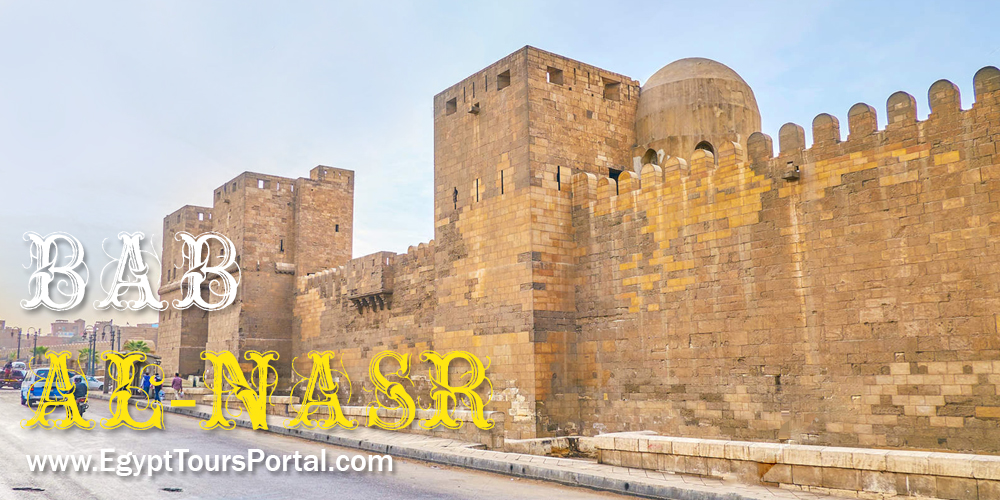
The second of the gates of Cairo is called Bab Al-Nasr, "Gate of Victory", located near the bustling Khan El Khalili Bazaar, was originally constructed in 969 AD by Jawhar Al-Siqali, a general in the Fatimid army, and later renovated in 1085 by Badr El Gamali. The gate's robust architecture is adorned with military motifs, including intricate carvings of swords and shields, symbolizing Cairo's resilience and defensive might. Alongside Bab El Fetouh, Bab El Nasr served as a key military entry point to the city, guarding Cairo against invaders and ensuring its safety during tumultuous periods.

The third door Bab Zuweila was built in 1092 AD by the powerful Fatimid commander Badr El Gamali, Bab Zuweila is one of Cairo's most famous and iconic gates. Located in the southern wall of the old city, it is flanked by the towering minarets of Al-Muayyad Mosque, offering panoramic views of the surrounding areas.
Historically, Bab Zuweila was used for public executions, including the infamous hanging of Toman Bay, the last Mamluk Sultan, making it a symbol of authority and justice. The gate is named after the Berber tribe of Zuwayla, who were stationed nearby as part of the city's defenses. Additionally, Bab Zuweila marked the starting point for Egyptian pilgrims on their sacred journey to Mecca, adding a spiritual significance to its historical role.

El Bab Al-Akhdar, a modest yet historically significant gate from the Fatimid era, is located near the revered Al Hussein Mosque. Constructed from engraved stone, it represents the last remaining part of Sultan El Hussein's tomb, where it is believed his head was once kept in a silver box. This gate's proximity to important religious landmarks underlines its historical and spiritual value to the people of Cairo.
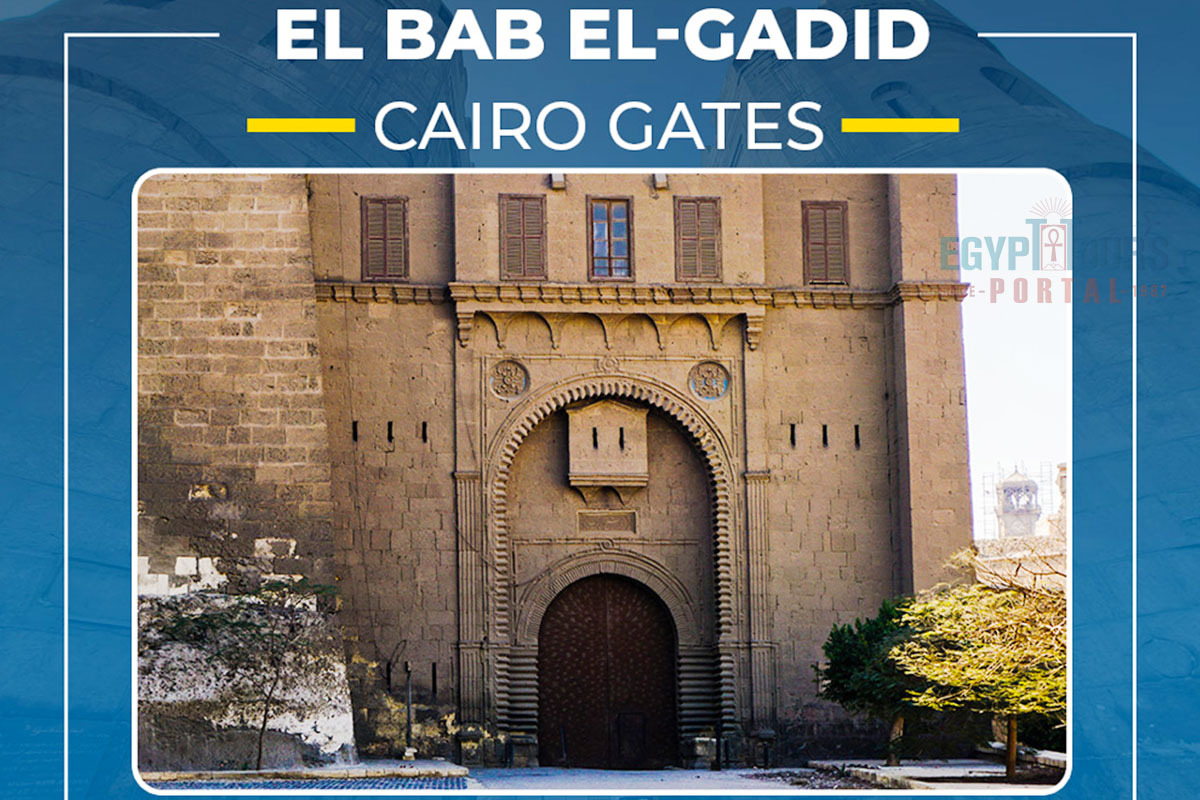
Built by the legendary Sultan Salah El-Din (Saladin) in 1170 AD, El Bab El-Gadid is situated near the Zaft Tower. Renowned for its steep inclinations, this gate was strategically designed as a robust defensive structure to repel invaders. As part of the Ayyubid fortifications, it exemplifies the military innovations introduced by Salah El-Din to strengthen Cairo's defenses, reflecting his commitment to protecting the city during the Crusades.
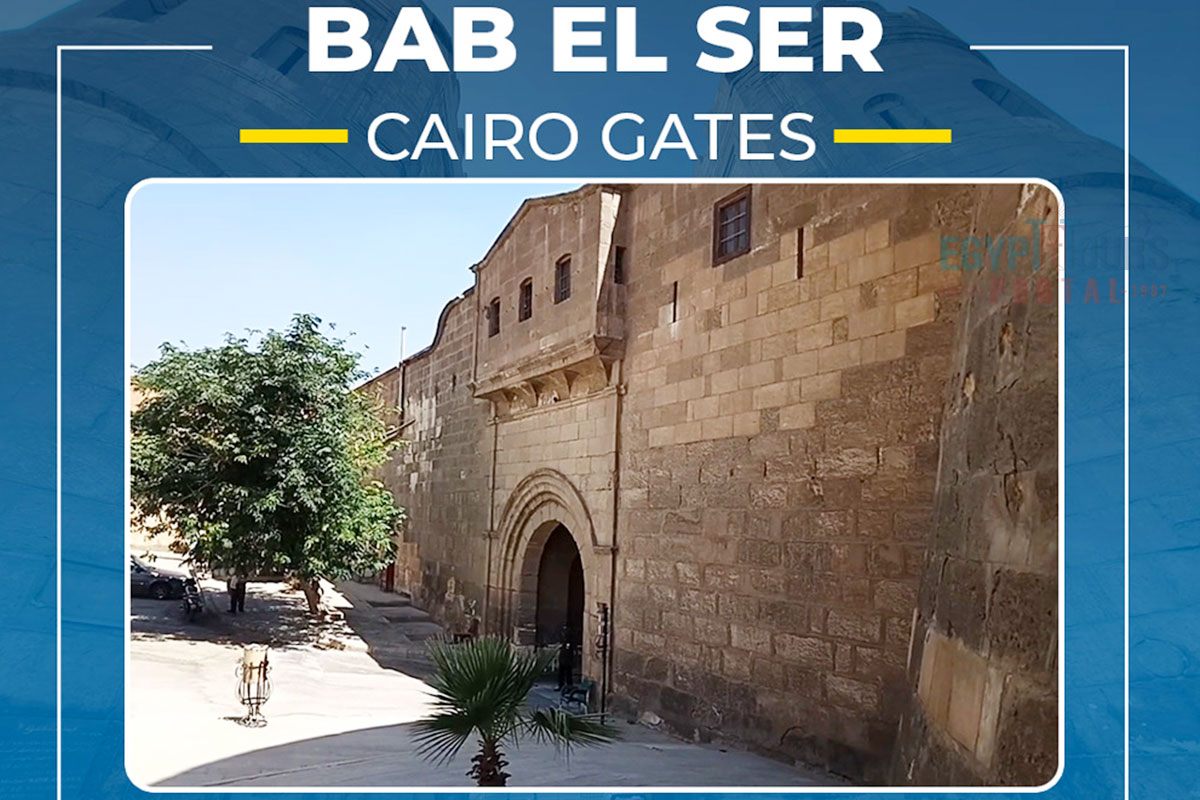
Also known as El Wastani Gate, Bab El Ser was the exclusive entrance to the Citadel reserved for high-ranking officials, clerics, and ministers. It lies between the general marine gate of the Cairo Citadel and the grand Mohammed Ali Mosque, symbolizing the elite access it provided. The gate's location and purpose highlight the hierarchical structure of Cairo's governance during the Mamluk and Ottoman periods.

Constructed by Jawhar Al-Siqali in 969 AD, Bab Sa'ada was part of Cairo's western defenses and was connected to Sa'ada Ibn Hayan, a key figure during the Fatimid dynasty. Although little remains of this gate today, its historical context sheds light on the strategic planning that characterized the early development of Cairo as a fortified city.
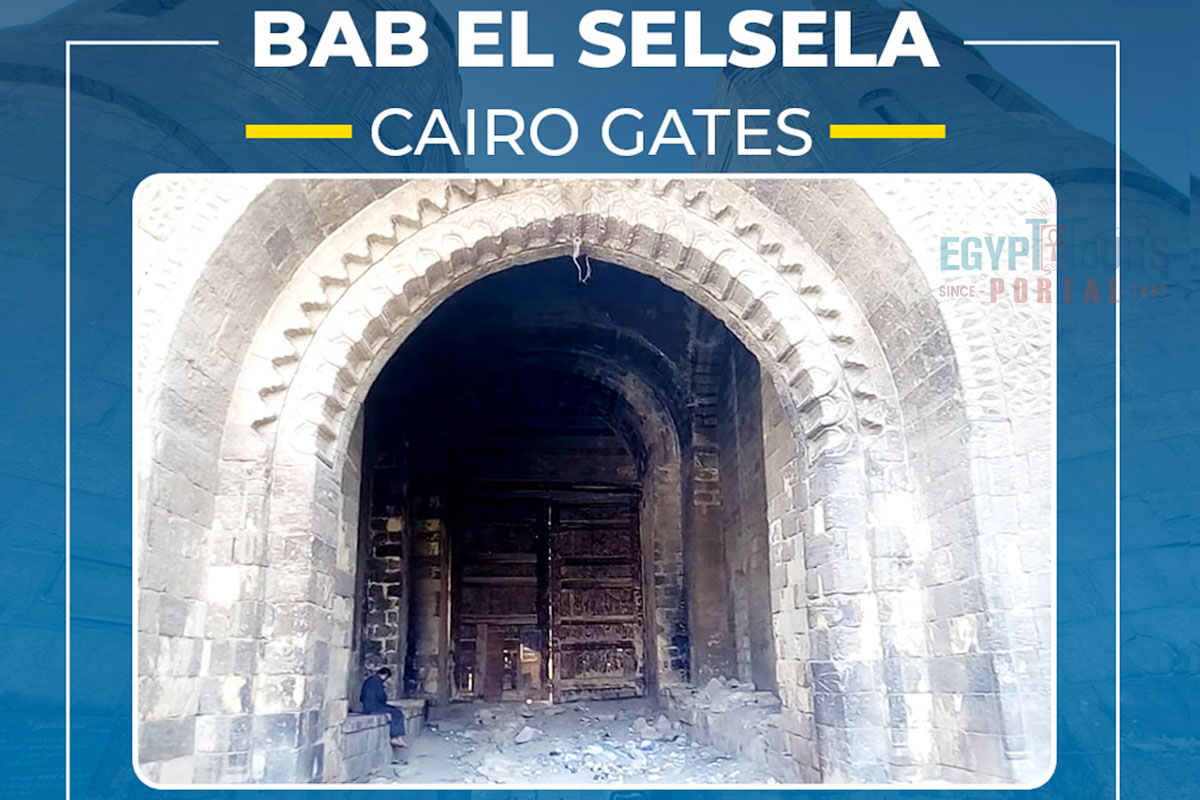
Bab El Selsela, also known as Al Azab Gate, overlooks the Citadel and was reconstructed in 1747 by Radwan Katkhuda Al-Halfi. It gained notoriety as the site of the infamous Mamluk massacre orchestrated by Mohamed Ali in 1811, a pivotal moment that marked the end of Mamluk power in Egypt. This historical event has made Bab El Selsela a significant symbol of political transition in Cairo's history.

Located in the heart of Khan El Khalili, Bab El Ghory was built in 1511 AD by Prince Konswa El Ghory. The gate is renowned for its elaborate carvings and inscriptions, which reflect the artistic grandeur of the Mamluk period. Bab El Ghory stands as a testament to the opulence and cultural achievements of the Mamluk rulers, who invested heavily in beautifying Cairo.
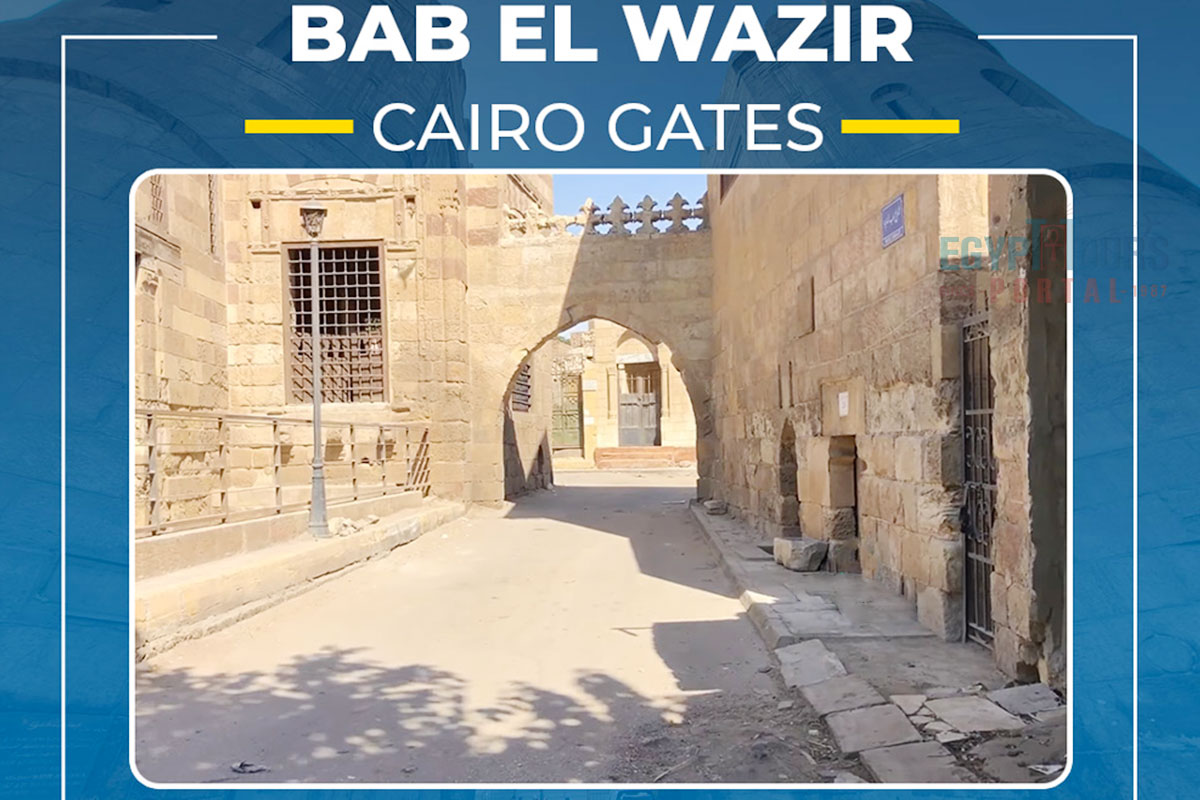
Built by Salah El-Din in the 12th century and later renovated in 1341 by Minister Negem El-Din Mohamed, Bab El Wazir is located between the Citadel and Bab El Maherouk. The gate lends its name to the nearby street and cemetery, which are still prominent in Cairo today. Its strategic position and historical significance make Bab El Wazir an important marker of Cairo's evolving urban fabric.

Constructed in 1494 AD by Sultan Ashraf Qayet Bei, Bab Qaitbay is situated at the end of El Sayeda Aisha Street. This gate is an outstanding example of Mamluk architecture, characterized by intricate stone carvings and attention to detail. Bab Qaitbay was also connected to the nearby El Sayeda Aisha Mosque, further enhancing its cultural and religious importance.
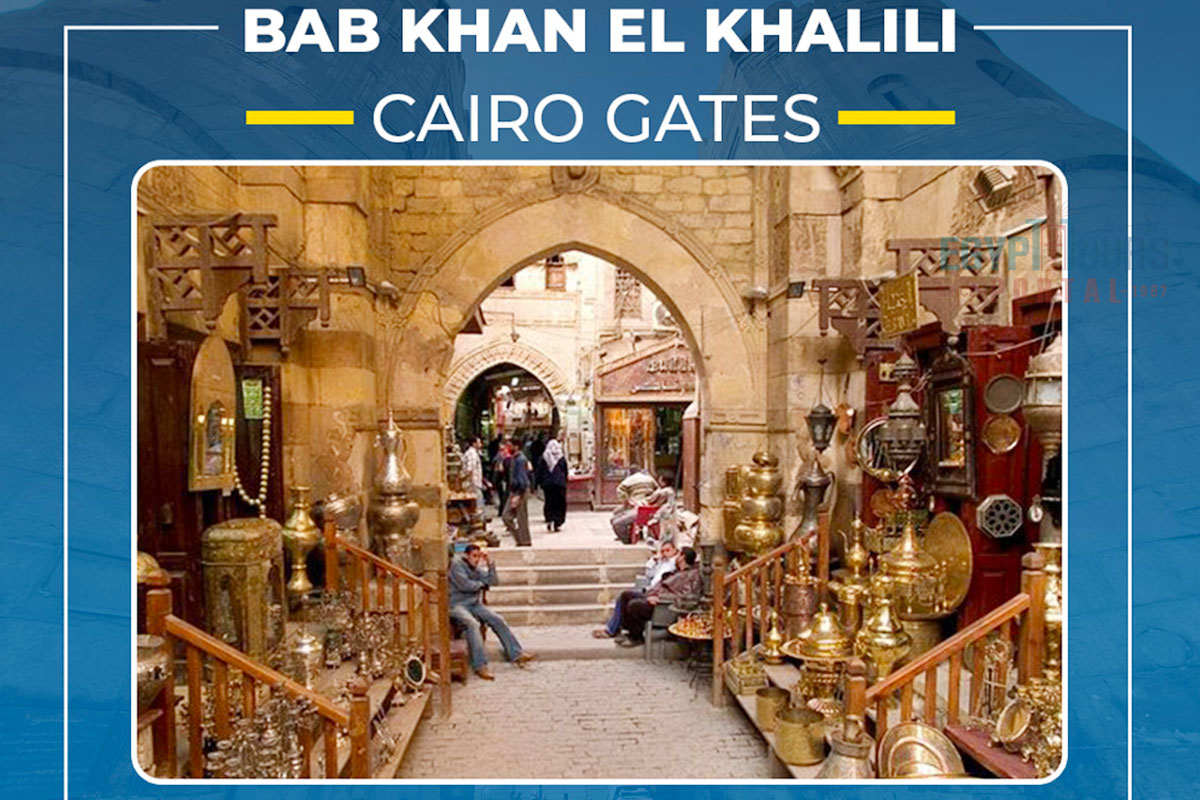
Built by Prince Seif El-Din Gerkes El-Khalili in 1511 AD, Bab Khan El Khalili was later rebuilt by Sultan El Ghoury. It serves as the main entrance to the famous Khan El Khalili market, a vibrant hub of commerce and culture in Cairo. The gate features intricate inscriptions and decorations, symbolizing the market's long-standing history as a center for trade and craftsmanship.

Located near Bab El Fetouh and El Geish Square, Bab El Husseinia was rebuilt in 1895. The gate connects two major streets and stands as a testament to Cairo's urban evolution during the late 19th century. It continues to be an important landmark, reflecting the city's adaptation to modern infrastructure while preserving its historical roots.

Built in 1241 by Negm El Din Ayoub, Bab El Khalk is located near Ahmed Maher Square. Originally known as Bab El Kharek, it served as a prominent passageway for Cairo's inhabitants. Today, the gate remains a significant historical site, offering insight into the city's medieval past and its role in the daily lives of its residents.
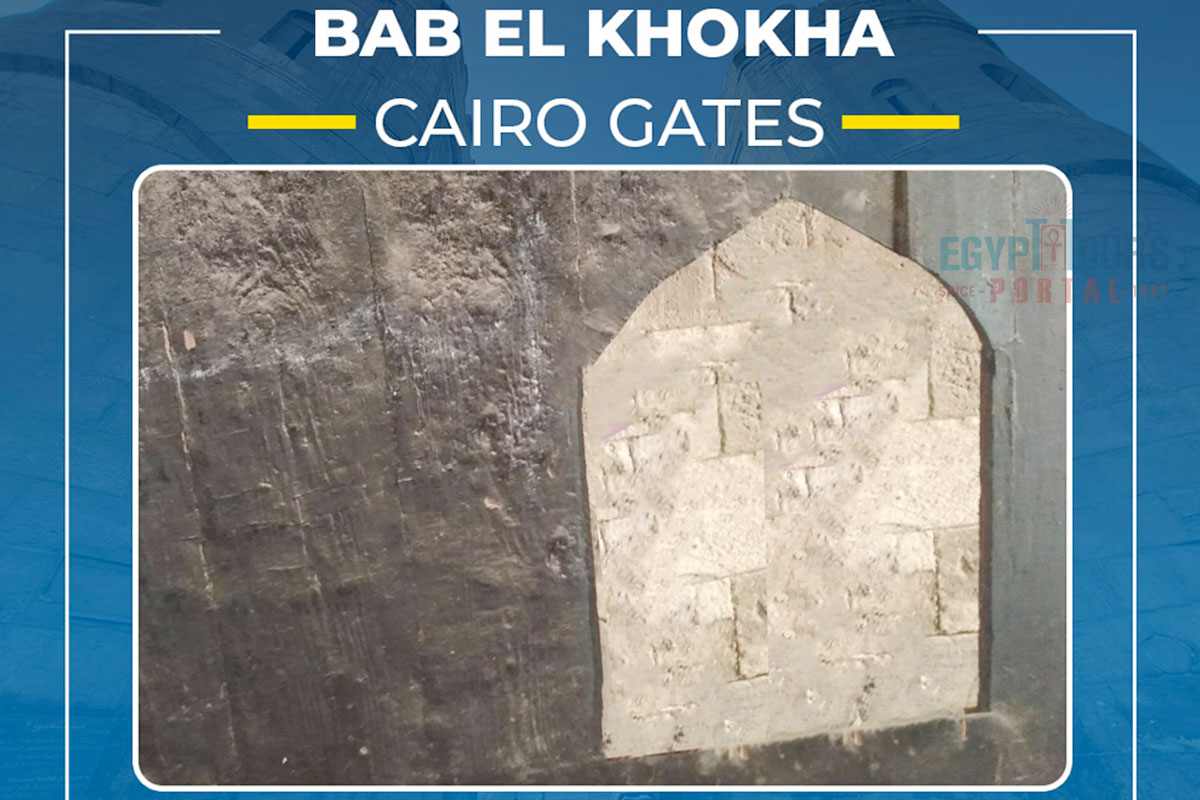
This vanished gate was constructed in the 14th century along the western wall of Cairo. Once adorned with marble and intricate knot designs, Bab El Khokha reflected the Mamluk era's attention to detail in architecture. Although the gate no longer stands, its legacy endures in the descriptions of its elaborate craftsmanship.
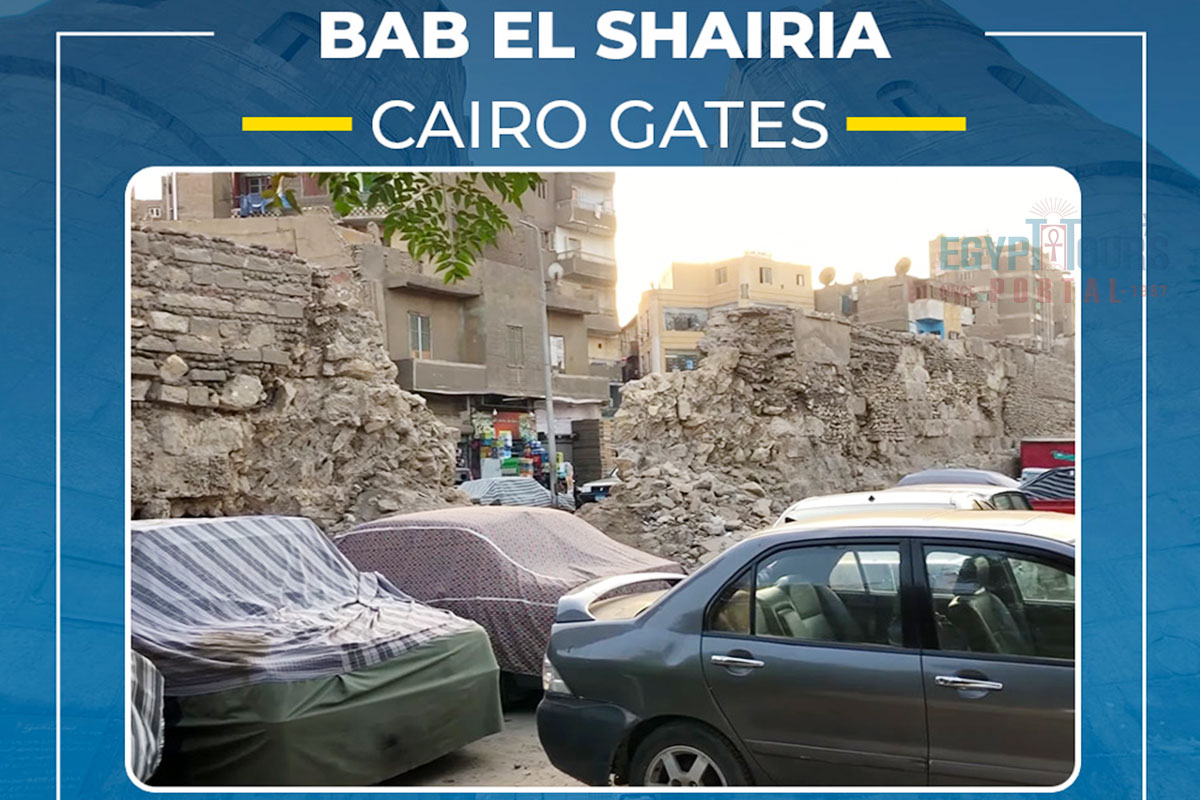
Bab El Shairia, also known as Bab Al Shariya, was built by Salah El-Din in 1170 AD as part of the northern wall of Cairo. It was located west of the Egyptian Gulf, between the Gulf and Bab al-Bahr. The gate was removed in 1884 after cracks were discovered. This gate was a crucial entry point on the northern side of Cairo, near Al Adawi Square, playing a key role in the city's defenses during the Ayyubid period. Its removal marked a significant change in Cairo's urban landscape as the city expanded.

Bab El Tawfik, located near Salah El-Din's eastern wall, was constructed on top of the ruins of Badr El Gamali's fortifications in 1097. The gate is known for its artistic designs and strategic positioning, which enhanced the city's defenses while also adding an element of aesthetic beauty to the fortified walls.
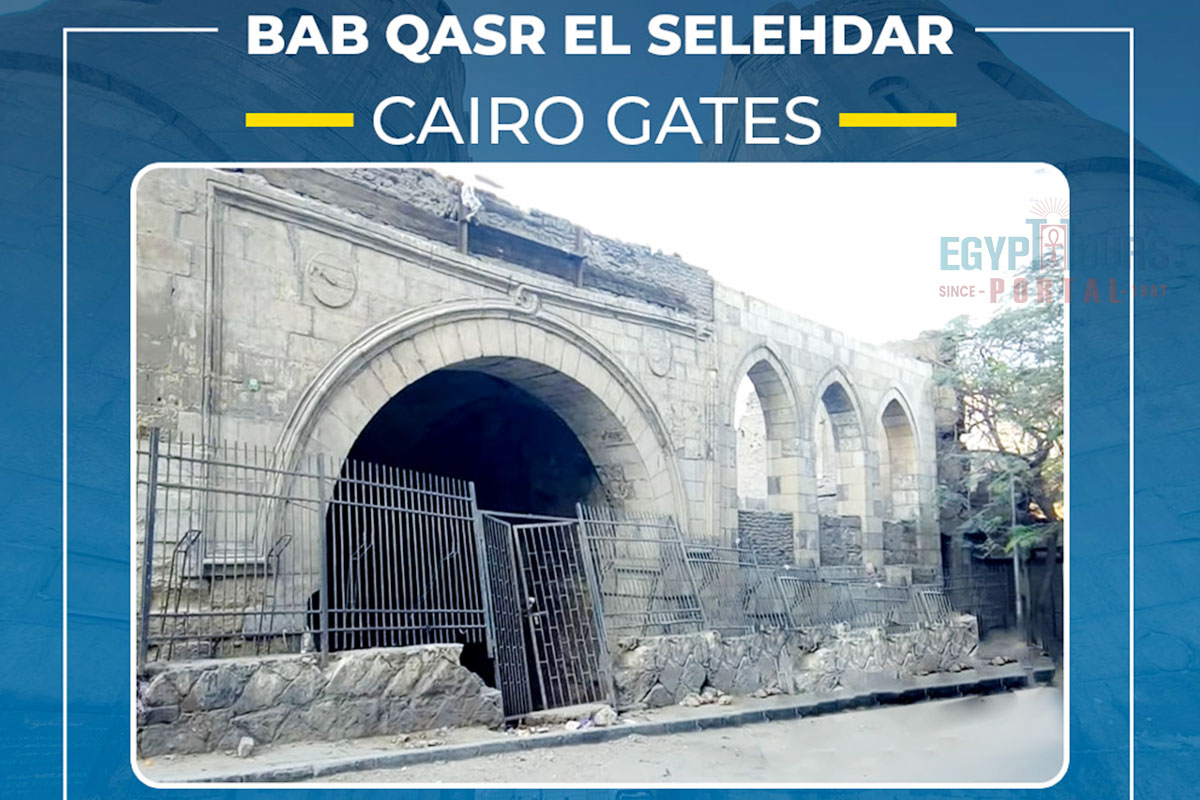
Built in 1347 in Souk El Selah, Bab Qasr El Selehdar is a remaining gate of Prince Meng El Selehdar's palace. Its decorative dome, inscribed with details of the builder's titles and legacy, showcases the architectural splendor and importance of the palace complex during the Mamluk era.
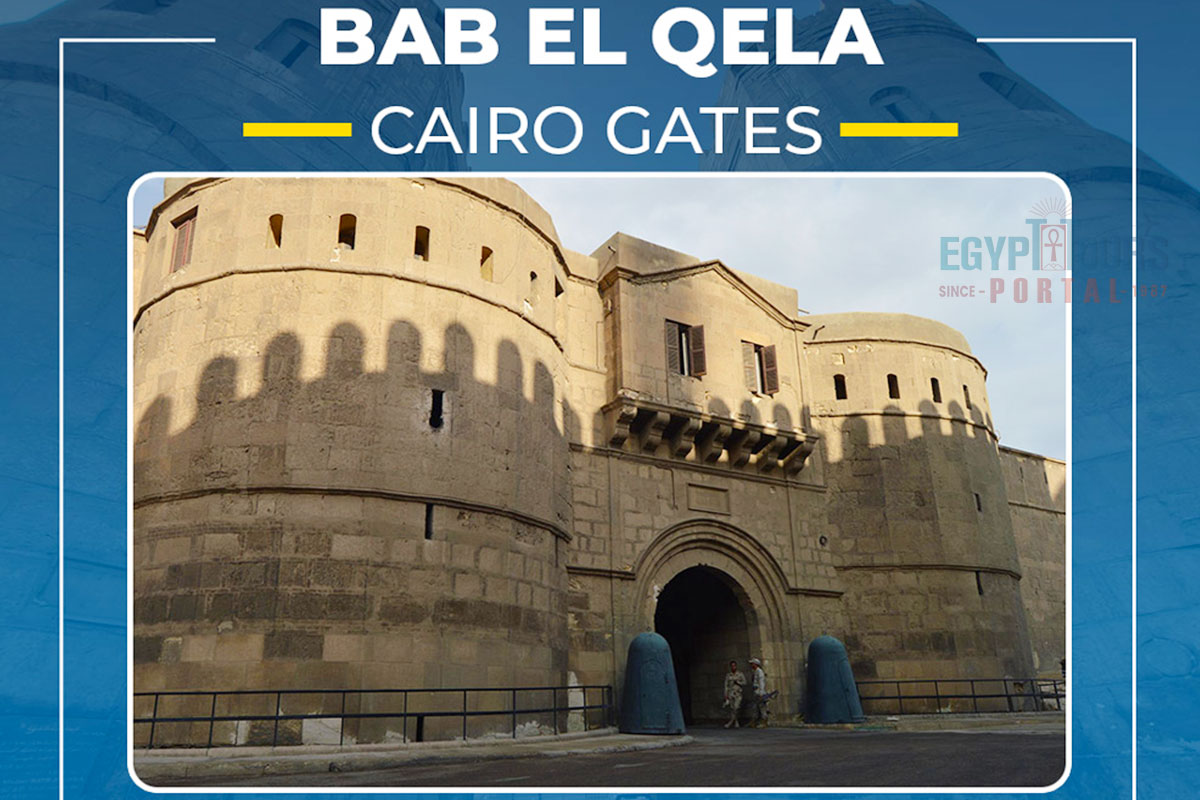
Bab El Qela was part of the Citadel's northeastern wall and served as a dividing point between the royal and general areas. Its towers, originally constructed by Sultan Zaher Bebers and later modified by subsequent rulers, played a crucial role in defining the boundaries of authority within the Citadel.

Built in 1173 by Salah El-Din, Bab El Qantara once stood on the eastern front of Cairo along the El Khalij road. Though much of the gate has been destroyed, remnants still exist near Amir El Geioush Street, offering a glimpse into the city's extensive fortifications during the Ayyubid period.
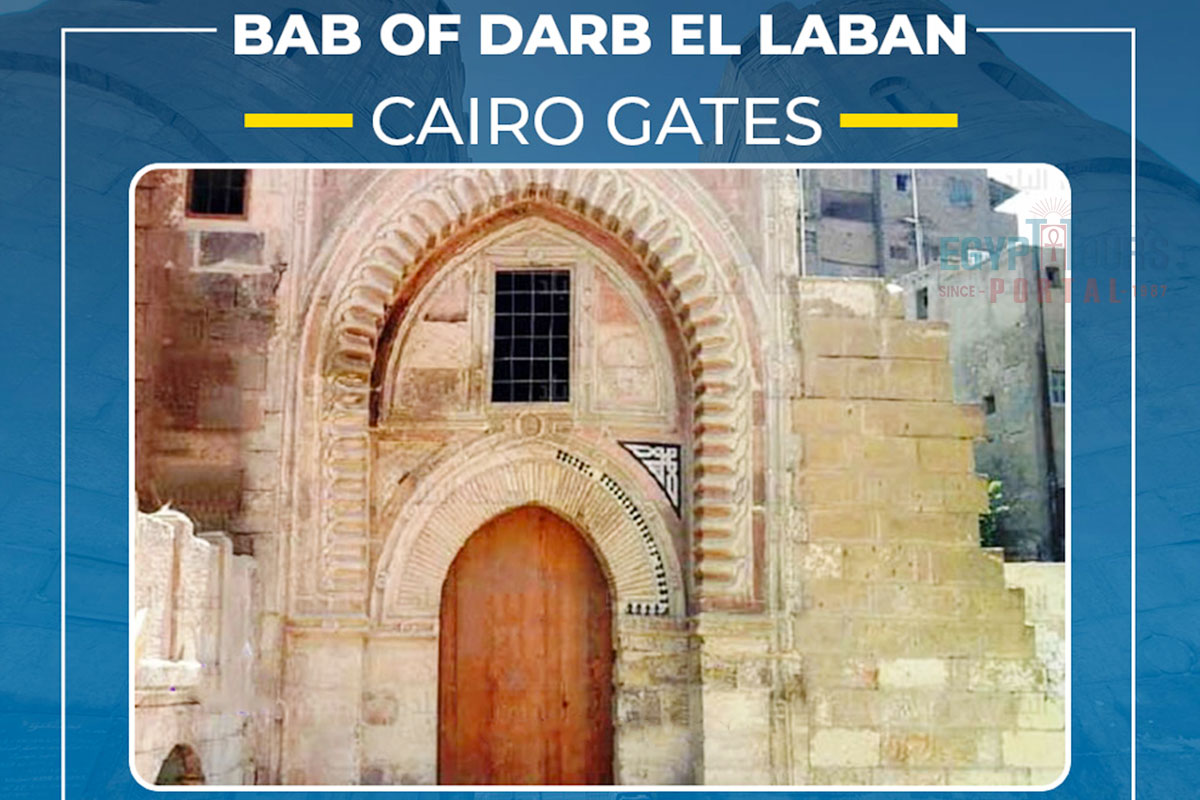
Built between 1250 and 1382 AD using limestone from the pyramids, Bab Darb El Laban was one of Cairo's oldest gates. It marked the entrance to the city and was located near the fourth-largest hospital in the Islamic world, highlighting its strategic importance in both health and defense.
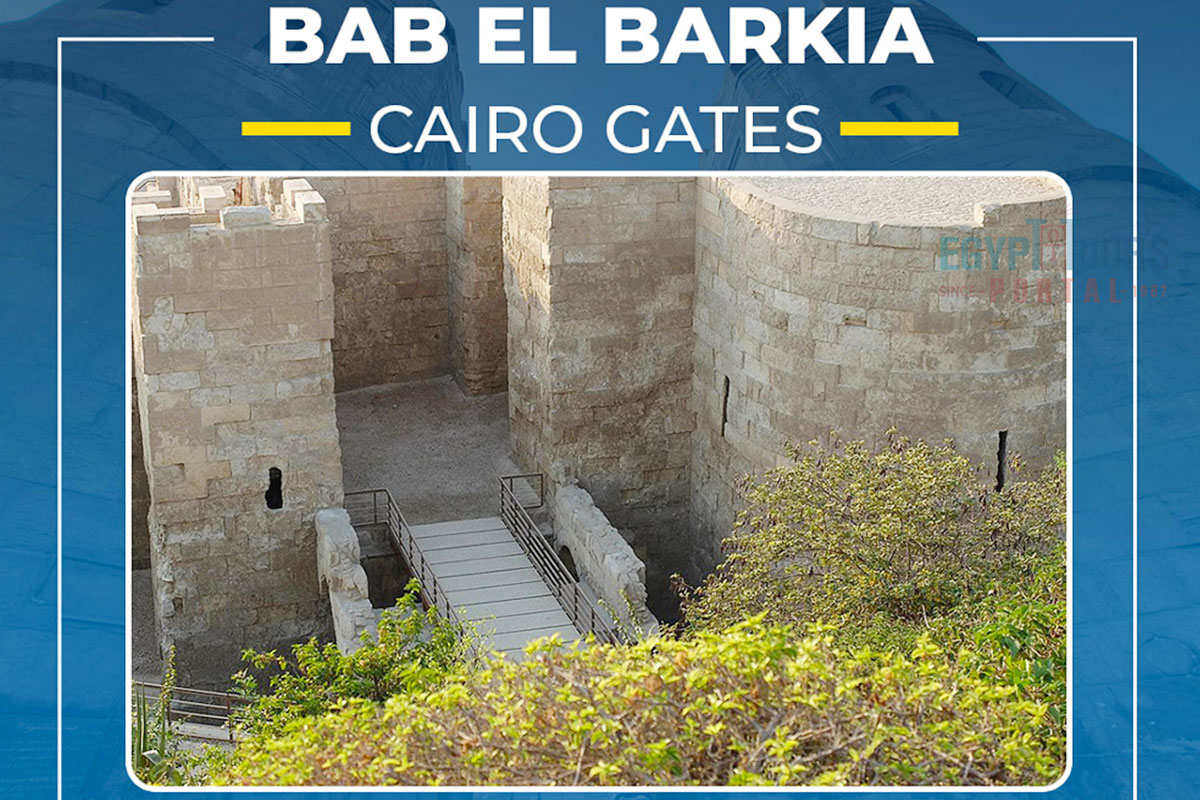
Bab El Barkia was constructed in two phases: the first by Jawhar Al-Siqali during the creation of Cairo's first wall, and the second by Salah El-Din in 1184 to expand the city's limits. The original gate was demolished in 1936 to make way for Al Azhar University, symbolizing the transformation of Cairo into a modern educational center.
Created by Jawhar Al-Siqali during the Fatimid era, Bab El Eid was one of the nine gates of the Eastern Palace. It was frequently used by rulers for processions and leisure time, located near the mosque on Qasr El Shawk Street, adding a ceremonial aspect to its function.
Built in 969 AD during the Fatimid period, Bab El Zumered was one of the nine gates of the Eastern Palace. It was known for its connection to the Nile, where the caliphs would travel to relax by the riverbank, highlighting the luxurious lifestyle of the Fatimid rulers.
Known as the Gate of Gold, Bab El Dahab was one of the grandest Fatimid gates. It was famous for its grand processions and its proximity to Mansouri Bimaristan, one of the largest hospitals in Egypt, emphasizing both its ceremonial and practical significance.
Bab El Zahuma served as a kitchen gate of the Fatimid palace, named for the rich aroma of meat that wafted through the area during food preparation. This gate provides insight into the daily life and opulence of the Fatimid court.
Also known as the Gate of the Palace of Thorns, this gate led directly to the Eastern Palace and served a ceremonial function during the Fatimid era. It was used in grand events and festivities, adding to the splendor of the palace.
Located in the Citadel, Bab Al-Dheisheh was known for its majestic architecture and elaborate decorations. Built by Sultan Imad Eddin Ismail in 1344 AD, the gate reflects the grandeur and artistic skill of the Mamluk period.
Constructed in 1174 AD by Salah El-Din, Bab El Hadid was a key entrance near Ramses Square and the Nile. The gate's strategic importance lay in its control of access to the river, making it an essential point for trade and transportation during the Ayyubid period.
Bab El Shairia, also known as Bab Al Shariya, is located under section 16 of the document. It provides details about its construction by Salah El-Din, its position in the northern wall of Cairo, and its removal in 1884.
Egypt has a great civilization and amazing archaeological sites besides the stunning Cairo gates, so if you prefer to discover them, you can explore our best Egypt vacation and book the most suitable journey for you. Or you can combine the best attractions of Cairo with enjoying a Nile cruise in the golden lands of Upper Egypt.
Cairo Stopover Tour For New Zealander Travelers Cairo stopover tour is the ultimate ...
Tour Location: Cairo/Giza...
Day Tour in Cairo and the Pyramids For New Zealander Travelers Day Tour in Cairo and...
Tour Location: Cairo/Giza...
Day Trip to Pyramids from Cairo for New Zealander Travelers Day trip to the Pyramids...
Tour Location: Giza...
Saqqara & Memphis Tour from Cairo For New Zealander Travelers Saqqara & Memp...
Tour Location: Memphis and Sakkara...
The most famous gate in Cairo is Bab Zuweila, one of the remaining gates of the old city walls from the Fatimid era. Built in the 11th century, it is a historical symbol of Islamic Cairo and has a rich history associated with it. The gate served both as an important defensive structure and a place of execution during the Mamluk period. Bab Zuweila is notable for its two towering minarets, which offer panoramic views of the city for visitors who climb them.
As for the greatest gate in Cairo, many consider Bab al-Futuh to hold that title. This majestic gate, also built during the Fatimid period, is an architectural marvel with massive towers that once protected the northern entrance to the city. Its name means "Gate of Conquests," and it was a crucial entry point during times of siege and battle. Bab al-Futuh stands out for its impressive size, strategic importance, and intricate carvings, making it one of the most magnificent gates in Cairo's historic fortifications.
The entire country of Egypt deserve to be explored with its every heavenly detail but there are places that must be seen before any other such as the breathtaking Hurghada's red sea, The wonders of Cairo the pyramids of Giza, the great sphinx, the Egyptian Museum, Khan El Khalili Bazaar, the wonders of Luxor like Valley of the Kings, Karnak & Hatshepsut temple and the wonders of Aswan such as Abu Simbel temples, Philea temple, Unfinished obelisk and The Wonders of Alexandria like Qaitbat Citadel, Pompey's Pillar and Alexandria Library. Read more about the best places to visit in Egypt.
If you want to apply for a Visa On Arrival that lasts for 30 days then you should be one of the eligible countries, have a valid passport with at least 6 months remaining and pay 25$ USD in cash, as for the E-Visa for 30 day you should have a valid passport for at least 8 months, complete the online application, pay the e-visa fee then print the e-visa to later be presented to the airport border guard. You could also be one of the lucky ones who can obtain a free visa for 90 days. Read more about Egypt travel visa.
Egypt has a variety of delicious cuisines but we recommend “Ful & Ta’meya (Fava Beans and Falafel)”, Mulukhiya, “Koshary”, a traditional Egyptian pasta dish, and Kebab & Kofta, the Egyptian traditional meat dish.
The best time to travel to Egypt is during the winter from September to April as the climate becomes a little tropical accompanied by a magical atmosphere of warm weather with a winter breeze. You will be notified in the week of your trip if the Climate is unsafe and if any changes have been made.
You should pack everything you could ever need in a small bag so you could move easily between your destinations.
We have been creating the finest vacations for more than 20 years around the most majestic destinations in Egypt. Our staff consists of the best operators, guides and drivers who dedicate all of their time & effort to make you have the perfect vacation. All of our tours are customized by Travel, Financial & Time consultants to fit your every possible need during your vacation. It doesn't go without saying that your safety and comfort are our main priority and all of our resources will be directed to provide the finest atmosphere until you return home.
You will feel safe in Egypt as the current atmosphere of the country is quite peaceful after the government took powerful measures like restructuring the entire tourist police to include all the important and tourist attractions in Egypt. Read more about is it safe to travel to Egypt.
Wear whatever feels right and comfortable. It is advised to wear something light and comfortable footwear like a closed-toe shoe to sustain the terrain of Egypt. Put on sun block during your time in Egypt in the summer to protect yourself from the sun.
The best activity is by far boarding a Nile Cruise between Luxor and Aswan or Vise Versa. Witness the beauty of Egypt from a hot balloon or a plane and try all the delicious Egyptian cuisines and drinks plus shopping in old Cairo. Explore the allure and wonders of the red sea in the magical city resorts of Egypt like Hurghada and many more by diving and snorkeling in the marine life or Hurghada. Behold the mesmerizing western desert by a safari trip under the heavenly Egyptian skies.
There are a lot of public holidays in Egypt too many to count either religious or nation, the most important festivals are the holy month of Ramadan which ends with Eid Al Fitr, Christmas and new years eve. Read more about festivals & publich holidays in Egypt.
Egypt is considered to be one of the most liberal Islamic countries but it has become a little bit conservative in the last couple of decades so it is advised to avoid showing your chest, shoulders or legs below the knees.
Arabic is the official language and Most Egyptians, who live in the cities, speak or understand English or at least some English words or phrases. Fewer Egyptians can speak French, Italian, Spanish, and German. Professional tour guides, who work in the tourism sector, are equipped to handle visitors who cannot speak Arabic and they will speak enough English and other languages to fulfill the needs of all our clients.
The fastest way is a car, of course, a taxi. If you are in Cairo ride a white taxi to move faster or you could board the fastest way of transportation in Egypt metro if the roads are in rush hour.
The temperature in Egypt ranges from 37c to 14 c. Summer in Egypt is somehow hot but sometimes it becomes cold at night and winter is cool and mild. The average of low temperatures vary from 9.5 °C in the wintertime to 23 °C in the summertime and the average high temperatures vary from 17 °C in the wintertime to 32 °C in the summertime. The temperature is moderate all along the coasts.
It is the home of everything a traveler might be looking for from amazing historical sites dating to more than 4000 years to enchanting city resorts & beaches. You will live the vacation you deserve as Egypt has everything you could possibly imagine.









